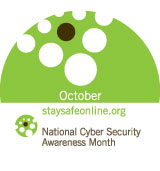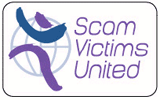Types of Id Theft
Identity theft takes many different forms
In some cases identity theft requires no contact at all, and the criminal may simply steal personal information from victim's mailboxes, or purchase it online in any one of the 10,000+ underground chat rooms that criminals regularly buy, sell and trade information on.
It is important for every consumer to learn how to deal with this growing threat, and how to spot attempts at identity theft before they can do their damage.
Credit Card Fraud and Identity Theft
While the invention of the internet, and the introduction of all the businesses that call it home, has been a boon to most of our lives, it has unfortunately also drawn its share of hackers, criminals and others whose goal is to separate hard working individuals from their money and their good reputations. One of the fastest growing crimes continues to be identity theft, and it is important for consumers to know how to spot this crime and how to avoid becoming a victim.
Many people are confused about the difference between credit card fraud and identity theft, and while both crimes have some similarities they have some significant differences as well. For most people, identity theft is the more serious of the two crimes, and it is usually far more difficult to recover from identity theft than from traditional credit card fraud.
Credit card fraud typically refers to the crime in which an individual steals the credit card number of another and uses it to make purchases. This crime can be serious, of course, and in some cases thousands of dollars can be charged before the victim realizes that the credit or debit card or the numbers have been stolen. In most cases, however, the cardholder is not held responsible for more than $50, and in many cases the issuing bank will waive even that low level of responsibility. However, bank policies and the laws that protect us are far different when it comes to using debit cards.
Identity theft, on the other hand, can be far more insidious, and therefore far more dangerous. While credit card fraud can often be spotted as soon as the next credit card bill arrives, identity theft often goes undetected and unreported for many months, due to the different nature of the crime.
In a typical identity theft scheme, the scam artist uses various means to appropriate the personal information of another individual. This information can include such things as Social Security numbers, account numbers, birth dates and the like. This information is then used to take obtain medical services, employment, housing, credit and often the very same data is used to when criminals commit other crimes. Often the crime goes undetected until the victims is forced to prove their innocence to collection agents, the IRS, or the police.
If a thief tampers with your medical records, your chart could then carry the wrong history and diagnoses. Those errors can cause serious trouble when you do need medical care. Due to HIPPA privacy laws, it's very difficult to clean up inaccurate medical histories.
There are two facets to medical identity theft; one is financial and the other involves your health care. Medical identity theft happens when a thief uses your social security number or health insurance to obtain medical services and health care benefits -including prescriptions, without your knowledge. Medical identity theft can carry with it damaging, far-reaching effects. Not only is medical id theft hard to detect, it is even more difficult to correct than the more commonly recognized -financial identity theft.
Victims of medical identity theft have found their medical histories contaminated with false diagnosis, billings for surgeries they never had, prescriptions they never received and bogus allergies and blood type notations-all services and notations that belong to someone else-the thief! And hospitals and insurance companies face massive expenses when it comes to medical identity theft, as they are forced to write-off charges incurred by the thieves.
What to Watch For:
- When you receive a notice from your insurance company, open it immediately. If you receive any notices for treatment that you don't recognize -dispute with your insurance company. After reading these notices, make sure you shred them before throwing them in the trash. Closely review your "explanation of benefits" statements.
- Check your credit report regularly. If you find medical bills on your credit reports that you don't recognize, dispute them with the credit reporting agencies and notify your insurance company.
- If you receive mail from hospitals where you have or haven't been a patient, don't assume that this mail is junk mail and throw it away. It could be a notice of a data breach or data theft. If you get this type of notice, you should notify the Credit reporting agencies and have fraud alerts placed on your credit file.
If you're a victim of medical identity theft
- Contact your health provider and your insurer. Most insurers have anti-fraud hot lines staffed by experts who can talk you through what to do. Typically, they will request a new insurance card for you and have a watch put on your old one.
- File a police report.
- Correct erroneous and false information in your file. Sending copies of a police report to insurers, providers and credit bureaus may be a step in cleaning up the problem.
- Take detailed notes. Write down the name and contact information of everyone you speak to.
Where to get help
- patientprivacyrights.org: Patient Privacy Rights is a nonprofit organization founded in 2004 by Deborah Peel. The organization is dedicated to ensuring Americans control all access to their health records.
- healthprivacy.org: This Web site has information on health privacy.
- hhs.gov: The U.S. Department of Health and Human Services has information on medical privacy, including privacy provisions of the federal Health Insurance Portability and Accountability Act.
- worldprivacyforum.org: The World Privacy Forum offers tips about what to do if you are a victim and links to other resources.
Procedures to correct your record within criminal justice databases can vary from state to state, and even from county to county. Some states have enacted laws with special procedures for identity theft victims to follow to clear their names. You should check with the office of your state Attorney General, but you can use the following information as a general guide.
If wrongful criminal violations are attributed to your name, contact the police or sheriff's department that originally arrested the person using your identity, or the court agency that issued the warrant for the arrest. File an impersonation report with the police/sheriff's department or the court, and confirm your identity: Ask the police department to take a full set of your fingerprints, photograph you, and make a copies of your photo identification documents, like your driver's license, passport, or travel visa. To establish your innocence, ask the police to compare the prints and photographs with those of the impostor.
If the arrest warrant is from a state or county other than where you live, ask your local police department to send the impersonation report to the police department in the jurisdiction where the arrest warrant, traffic citation, or criminal conviction originated.
The law enforcement agency should then recall any warrants and issue a "clearance letter" or "certificate of release" (if you were arrested/booked). You'll need to keep this document with you at all times in case you're wrongly arrested again. Ask the law enforcement agency to file the record of the follow-up investigation establishing your innocence with the district attorney's (D.A.) office and/or court where the crime took place. This will result in an amended complaint. Once your name is recorded in a criminal database, it's unlikely that it will be completely removed from the official record. Ask that the "key name" or "primary name" be changed from your name to the impostor's name (or to "John Doe" if the impostor's true identity is not known), with your name noted as an alias.
You'll also want to clear your name in the court records. To do so, you'll need to determine which state law(s) will help you with this and how. If your state has no formal procedure for clearing your record, contact the D.A.'s office in the county where the case was originally prosecuted. Ask the D.A.'s office for the appropriate court records needed to clear your name. You may need to hire a criminal defense attorney to help you clear your name. Contact Legal Services in your state or your local bar association for help in finding an attorney.
Contact your state Department of Motor Vehicles (DMV) to find out if your driver's license is being used by the identity thief. Ask that your files be flagged for possible fraud
Child Identity Theft
We often hear about identity theft and the many costs, frustrations and headaches it causes for its (presumably adult) victims. But did you know that your toddler's identity is at risk too? That's right. We now need to be protective of our children's identities too.
The daily newspapers are filled with headlines about data thefts that serve as constant reminders that we are not in total control of our identities and that everyone on this planet (young or old) is at risk. ID thieves have even been known to steal the identities of the dead. One type of identity fraud that is rarely discussed, however, is the theft of a child's identity.
Kids make perfect targets for identity thieves since the theft of a child's identity can go undetected for a long period of time. Often, the theft isn't discovered until a young adult is denied a student loan, credit or employment, all because of a destroyed credit rating. It is reported that more than 11,500 children are victims of identity theft each year, however that number is growing and largely under-reported because parents often do not know that their childrens personal information has been hijacked.
While childrens' "identities" are typically stolen to create new accounts, more and more, they are being used by undocumented workers to gain employment. Because the Social Security Administration does not have a "check and balance" system in place to tie names, ages and genders to social security numbers, thieves are able to manipulate the identities of children and use them to their advantage.
A child's personal information can be compromised by a variety of third-parties, including: doctors' and dentists' offices, school districts, insurance providers or even youth sporting leagues.
What can parents do to protect their children?
- Call the major credit bureaus-Experian, Equifax and TransUnion-to learn if your child has a credit report. You want to be certain that no credit report exists. If a report does exist, you'll need to call a credit repair agency to restore the report and immediately place a fraud alert on that account. That fraud alert will need to be renewed every 90 days.
- Contact the Social Security Administration annually to request a work history for your child's social security number. As you would assume, you are looking to find a blank work history.
- If your children receive junk mail or offers for credit from lenders or credit card companies, this could be a red flag that someone is using their identity.
- Talk to your kids about sharing too much information. Help them be web wise kids.
Synthetic Identity Theft
Synthetic identity theft happens when thieves put together bits and pieces of personal information from different people and create a brand new identity. It's called "synthetic" because it is a fake identity where when created, the thief uses a social security number with a different name and different birth date. Because the information is mismatched it often flies under the radar of the credit bureaus system and can go undetected for years.
Find & Read Your Teen's Profile
I realize it seems like snooping, but it's not. You need to make sure your child is safe, so the first thing parents should do is look up their child's profile, to make sure he or she hasn't released too much information. Check their friend's profiles too. Sometimes it's friends that unknowingly post too much information about your child.
Talk to your teen about the dangers of releasing too much information
Why do they have a profile? Who are they communicating with? Once you know why your child is on the site, you can make sure they're only giving the information they need.
They should never post information that can lead a predator to their home, work, or favorite hangouts.
The Internet is a public place
Don't let your child post anything that you would want the public, other parents, teachers and predators to see. Everyone is looking. And what you post on the Internet stays there forever. Let your children know that it may affect whether they get into college or get a job.
Amp up those privacy settings
Make sure your children use the most restrictive privacy settings available on the social networking site where they have a personal profile. Both Myspace and Facebook allow your children to restrict access to their profiles to friends. They should only allow people they know access to their full profiles. Talk to your teens and tweens about the dangers of sharing music on peer to peer sites.
Follow your child's cyber footprints
Look at their profiles regularly, and click on their friends' profiles. You want to see what your kids are saying and what your kids' friends are saying about them! Often, it's your child's friends who are posting pictures of them that you might not want online-and giving out personal information and private details that shouldn't be online either. Also, click on the links your child is following. You want to know what they're looking at, so you can stop them if they're going to dangerous sites. You also need to make sure your kids aren't hiding a profile.
Credit, ATM and Debit Cards: What to do if They're Lost or Stolen
Many people find it easy and convenient to use credit cards and ATM or debit cards. The Fair Credit Billing Act (FCBA) and the Electronic Fund Transfer Act (EFTA) offer procedures for you to use if your cards are lost or stolen.
Limiting Your Financial Loss
Report the loss or theft of your credit cards and your ATM or debit cards to the card issuers as quickly as possible. Many companies have toll-free numbers and 24-hour service to deal with such emergencies. It's a good idea to follow up your phone calls with a letter. Include your account number, when you noticed your card was missing, and the date you first reported the loss.
You also may want to check your homeowner's insurance policy to see if it covers your liability for card thefts. If not, some insurance companies will allow you to change your policy to include this protection.
Credit Card Loss or Fraudulent Charges (FCBA). Your maximum liability under federal law for unauthorized use of your credit card is $50. If you report the loss before your credit cards are used, the FCBA says the card issuer cannot hold you responsible for any unauthorized charges. If a thief uses your cards before you report them missing, the most you will owe for unauthorized charges is $50 per card. Also, if the loss involves your credit card number, but not the card itself, you have no liability for unauthorized use.
After the loss, review your billing statements carefully. If they show any unauthorized charges, it's best to send a letter to the card issuer describing each questionable charge. Again, tell the card issuer the date your card was lost or stolen, or when you first noticed unauthorized charges, and when you first reported the problem to them. Be sure to send the letter to the address provided for billing errors. Do not send it with a payment or to the address where you send your payments unless you are directed to do so.
ATM or Debit Card Loss or Fraudulent Transfers (EFTA). Your liability under federal law for unauthorized use of your ATM or debit card depends on how quickly you report the loss. If you report an ATM or debit card missing before it's used without your permission, the EFTA says the card issuer cannot hold you responsible for any unauthorized transfers. If unauthorized use occurs before you report it, your liability under federal law depends on how quickly you report the loss.
For example, if you report the loss within two business days after you realize your card is missing, you will not be responsible for more than $50 for unauthorized use. However, if you don't report the loss within two business days after you discover the loss, you could lose up to $500 because of an unauthorized transfer. You also risk unlimited loss if you fail to report an unauthorized transfer within 60 days after your bank statement containing unauthorized use is mailed to you. That means you could lose all the money in your bank account and the unused portion of your line of credit established for overdrafts. However, for unauthorized transfers involving only your debit card number (not the loss of the card), you are liable only for transfers that occur after 60 days following the mailing of your bank statement containing the unauthorized use and before you report the loss.
If unauthorized transfers show up on your bank statement, report them to the card issuer as quickly as possible. Once you've reported the loss of your ATM or debit card, you cannot be held liable for additional unauthorized transfers that occur after that time.
Protecting Your Cards
The best protections against card fraud are to know where your cards are at all times and to keep them secure. For protection of ATM and debit cards that involve a Personal Identification Number (PIN), keep your PIN a secret. Don't use your address, birthdate, phone or Social Security number as the PIN and do memorize the number.
The following suggestions may help you protect your credit card and your ATM or debit card accounts.
For Credit and ATM or Debit Cards:
* Be cautious about disclosing your account number over the phone unless you know you're dealing with a reputable company.
* Never put your account number on the outside of an envelope or on a postcard.
* Draw a line through blank spaces on charge or debit slips above the total so the amount cannot be changed.
* Don't sign a blank charge or debit slip.
* Tear up carbons and save your receipts to check against your monthly statements.
* Cut up old cards - cutting through the account number - before disposing of them.
* Open monthly statements promptly and compare them with your receipts. Report mistakes or discrepancies as soon as possible to the special address listed on your statement for inquiries. Under the FCBA (credit cards) and the EFTA (ATM or debit cards), the card issuer must investigate errors reported to them within 60 days of the date your statement was mailed to you.
* Keep a record - in a safe place separate from your cards - of your account numbers, expiration dates, and the telephone numbers of each card issuer so you can report a loss quickly.
* Carry only those cards that you anticipate you'll need.
For ATM or debit cards:
* Don't carry your PIN in your wallet or purse or write it on your ATM or debit card.
* Never write your PIN on the outside of a deposit slip, an envelope, or other papers that could be easily lost or seen.
* Carefully check ATM or debit card transactions before you enter the PIN or before you sign the receipt; the funds for this item will be fairly quickly transferred out of your checking or other deposit account.
* Periodically check your account activity. This is particularly important if you bank online. Compare the current balance and recent withdrawals or transfers to those you've recorded, including your current ATM and debit card withdrawals and purchases and your recent checks. If you notice transactions you didn't make, or if your balance has dropped suddenly without activity by you, immediately report the problem to your card issuer. Someone may have co-opted your account information to commit fraud.
Sources: Department of Justice, Federal Trade Commission
Stay up-to-date on the various methods used to steal your identity!
See: Blog Post about: scams & hoaxes and identity theft prevention.


 NEWSLETTER SIGN UP
NEWSLETTER SIGN UP SUBSCRIBE
SUBSCRIBE CONTACT
CONTACT
















